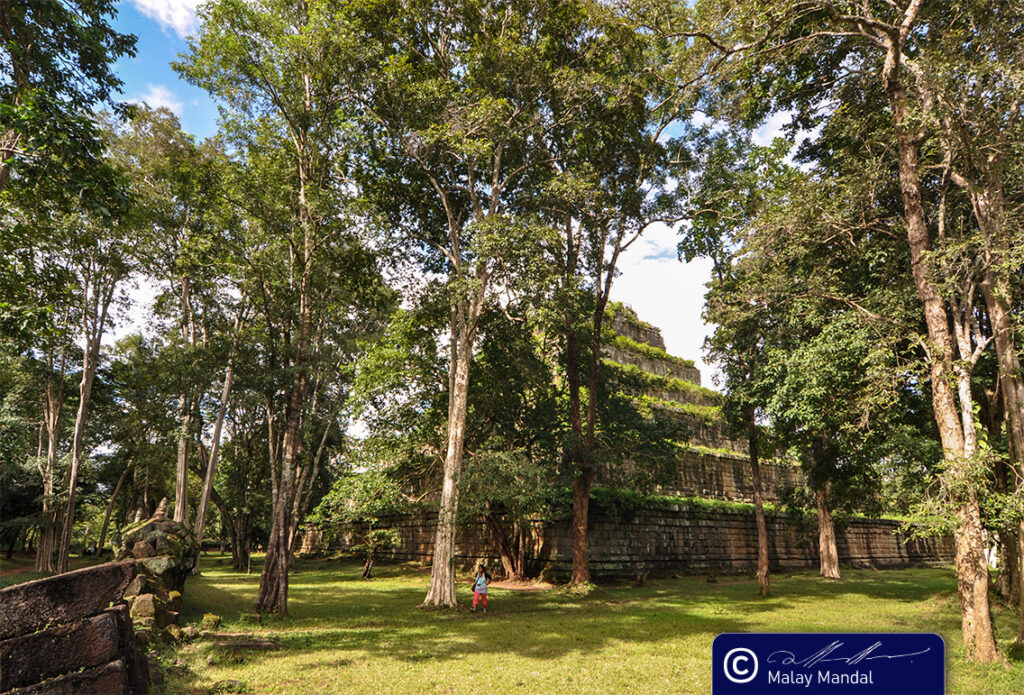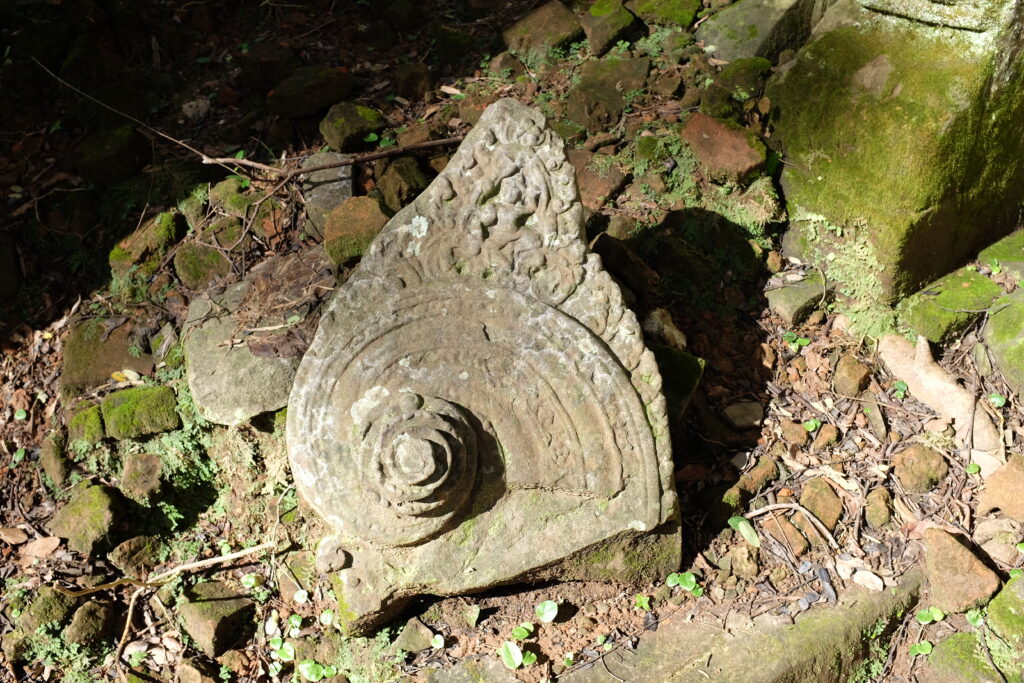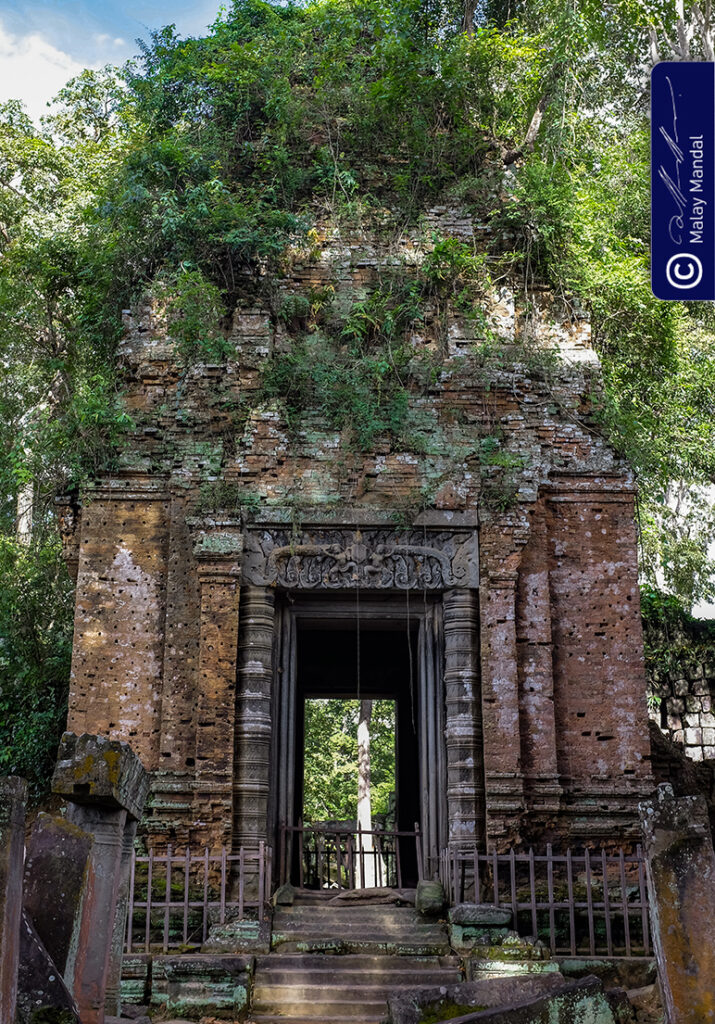
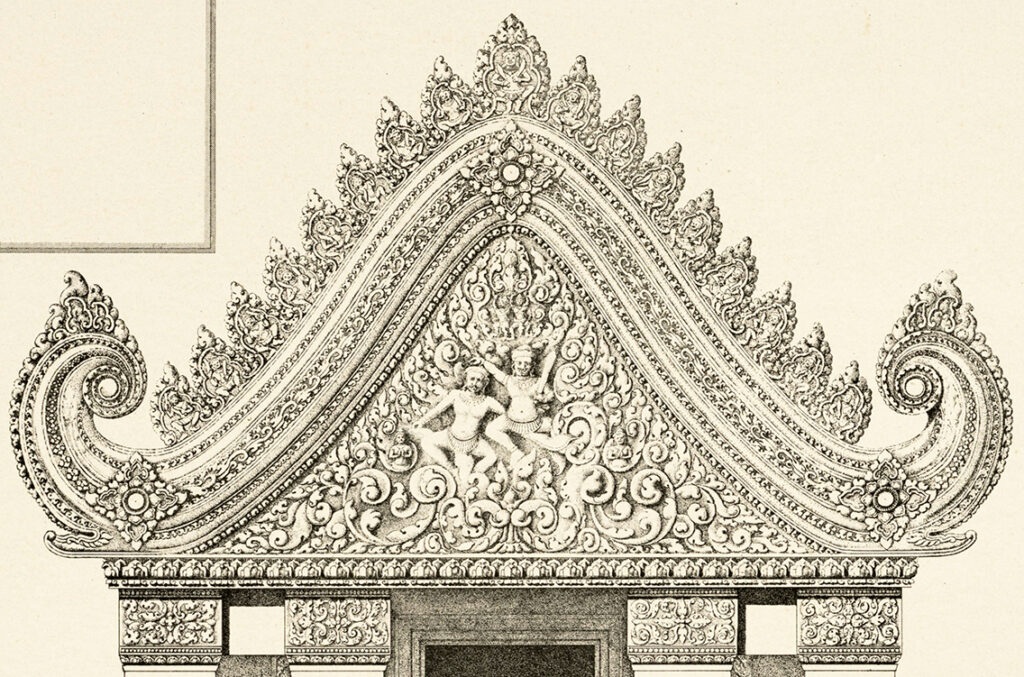
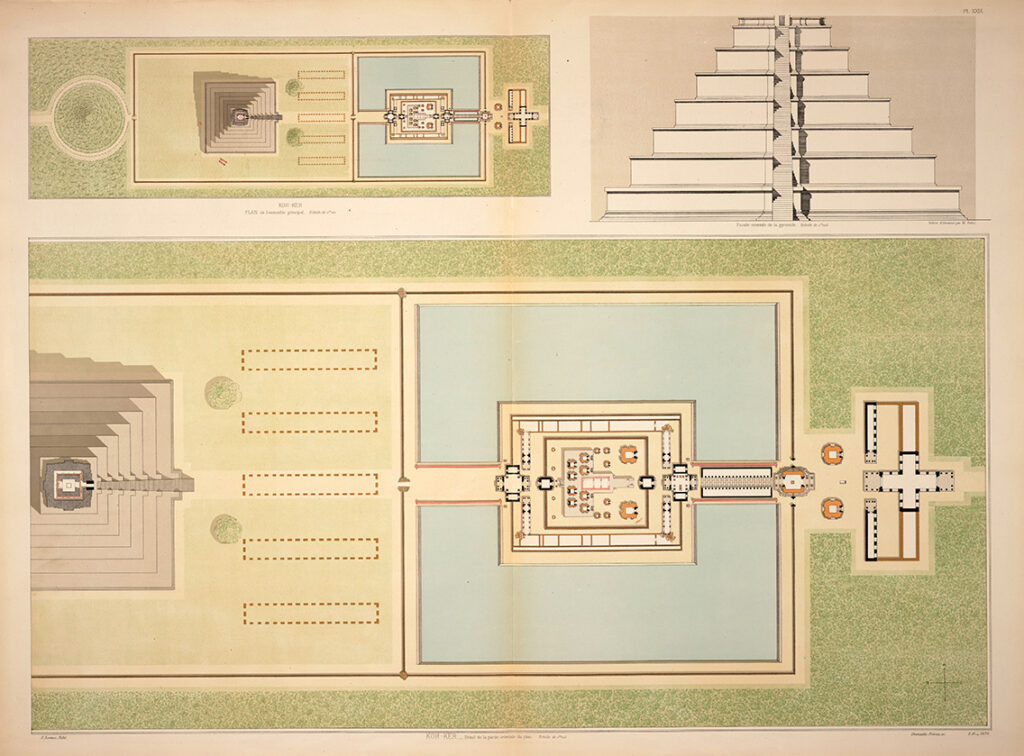
Despite its ruined condition, Koh Ker makes an impressive impact – not for its widespread layout and plethora of monuments but for freshness in its approach, bringing in a paradigm shift in Khmer architecture and art. Koh Ker represents aspirations of Jayavarman IV (r. 928-941 CE) who broke off from the Khmer empire of Yashodharapura and founded his own kingdom. He chose Koh Ker and named it as “Lingapura” after the Hindu deity Shiva. However, this glory was short-lived; after death of its founder, by 944 CE the imperial metropolis was abandoned in favor of the old capital Yashodharapura. Koh Ker was left to the survive on its own, fighting the forces of nature. Today after centuries of neglect and disrepair, Koh Ker is in urgent need of conservation and sensitive restoration.
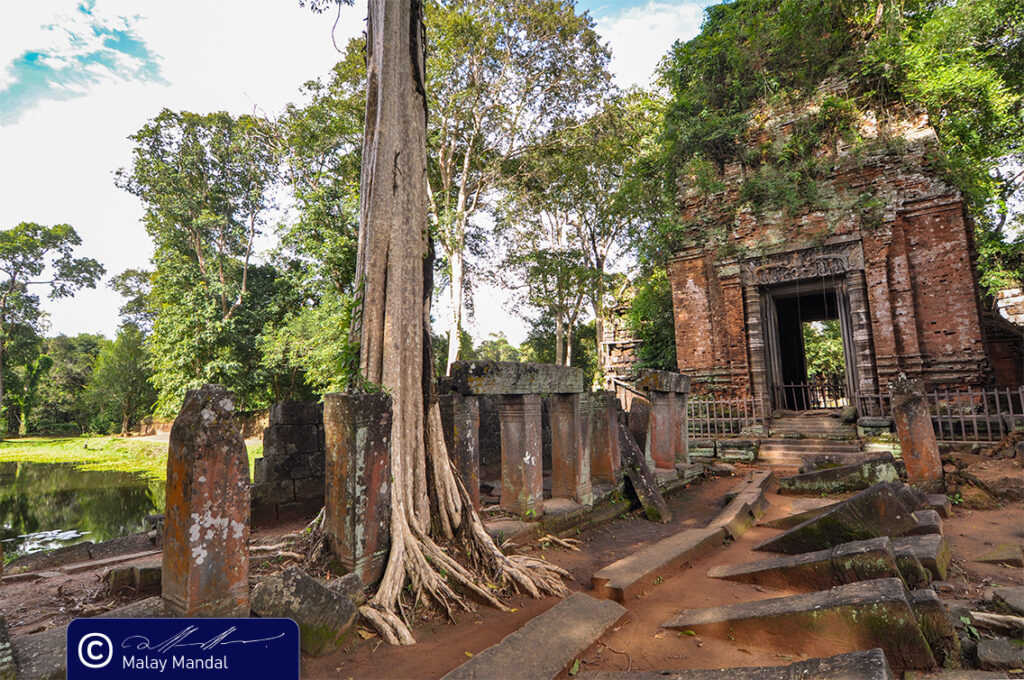

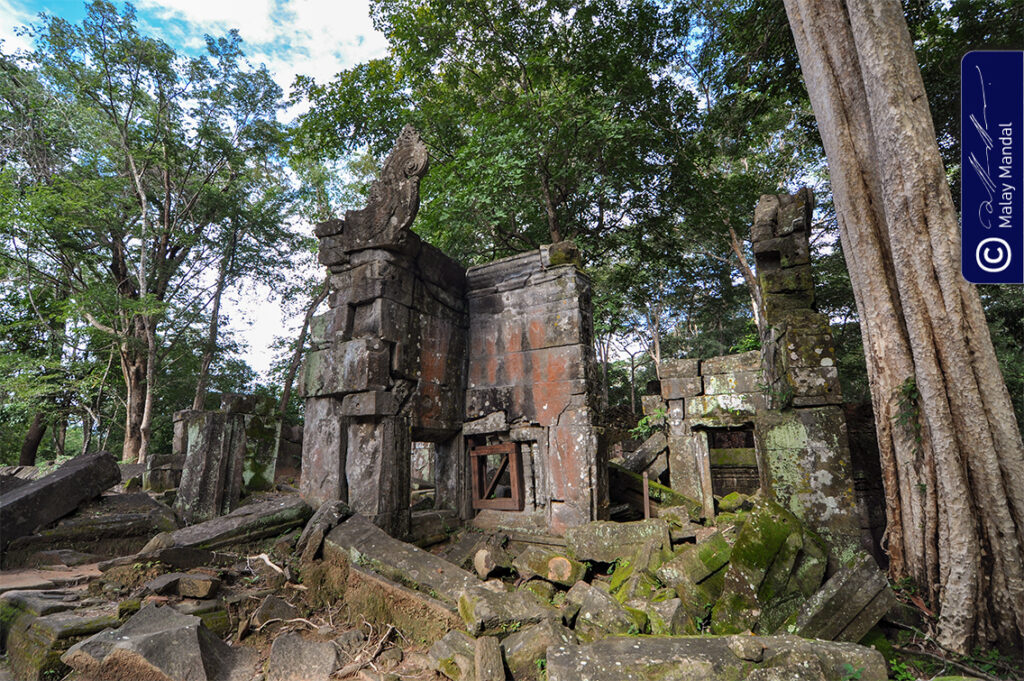
Decay and dilapidation, took over a majority of edifices however, the iconic, and somewhat incongruous pyramidal structure – Prasat Thom – stood firm and high, keeping a vigil over the lost empire that gradually faded into the neighboring forest. Koh Ker was built to create an identity; the primal objective of Koh Ker architects was to create something of lasting quality and ornamentation was secondary. Unfortunately, the vagaries of time have taken toll on the staircases that once climbed over Prasat Thom; the wooden ladder arranged over the cardinal staircase on east has also given way, making the hike currently impossible. Amongst all of the Khmer temples, Koh Ker is least studied; visited by Delaporte in 1880 and surveyed by Parmentier in 1921. Distinctness of architecture is equally matched by the sculptural experimentations of Koh Ker. Dawn Rooney rightly feels, “Koh Ker images are renowned, not only for their colossal size and powerful musculature, but also for portraying action and movement previously unknown in Khmer sculpture.” This single site has contributed handsomely to the National Museum in Phnom Penh.

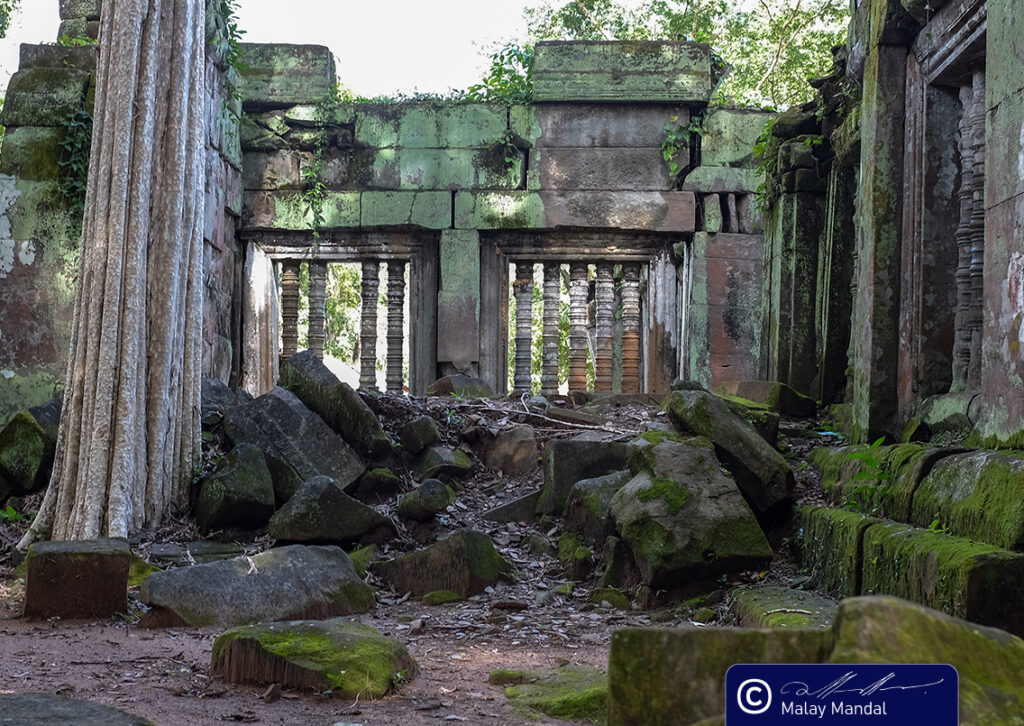
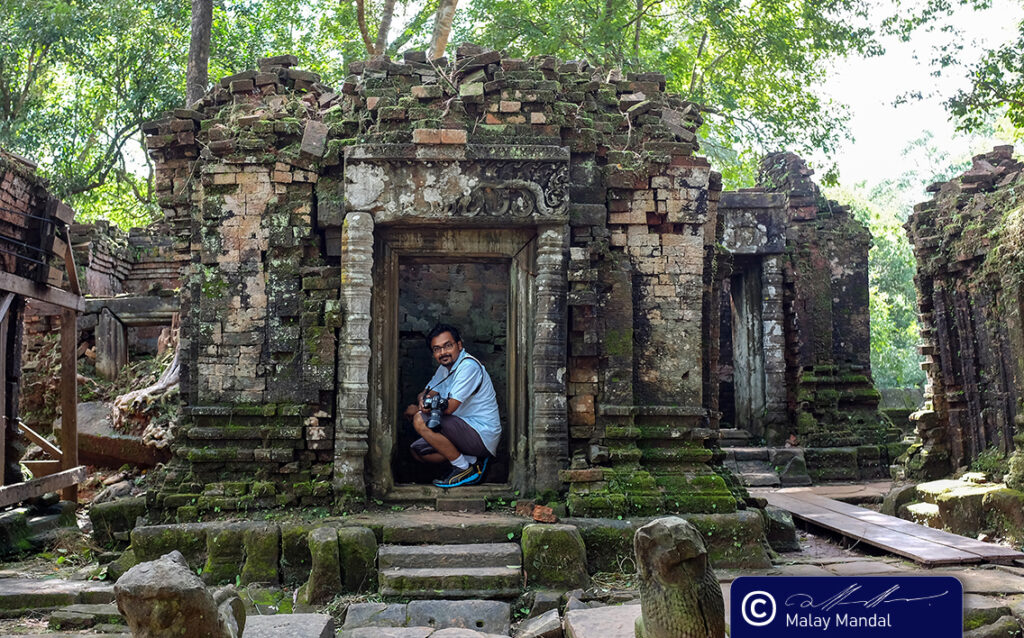
Practicalities | Although Koh Ker is listed under UNESCO list of monuments under threat, conservation still seems like a distant dream. Only ruins have survived of what used to be a prosperous city covering over 40 square kms. The sheer number of ruined monuments totaling around 800 can give you an idea of what this was like during its heydays. Koh Ker was extensively land-mined by the Khmer Rouge and traces have existed to this day. Only the main temple clusters have been de-mined and made accessible. The main complex has a linear orientation; after the entrance gateway, we find a walkaway moving into Prasat Krahom – a walled complex housing subsidiary shrines and libraries. The main attraction of Koh Ker – the pyramidal Prasat Thom – soon emerges on the western horizon. Designed as a seven-tiered pyramid (55mX55m at base and 40m in height), makes us to wonder if a Mayan architect was for selected for the project as such pyramids were completely unknown to the Indian Culture. Other noteworthy edifices include Prasat Thneng, Prasat Leung, Prasat Bram, Prasat Neang, Prasat khmau, and Prasat Chen.
